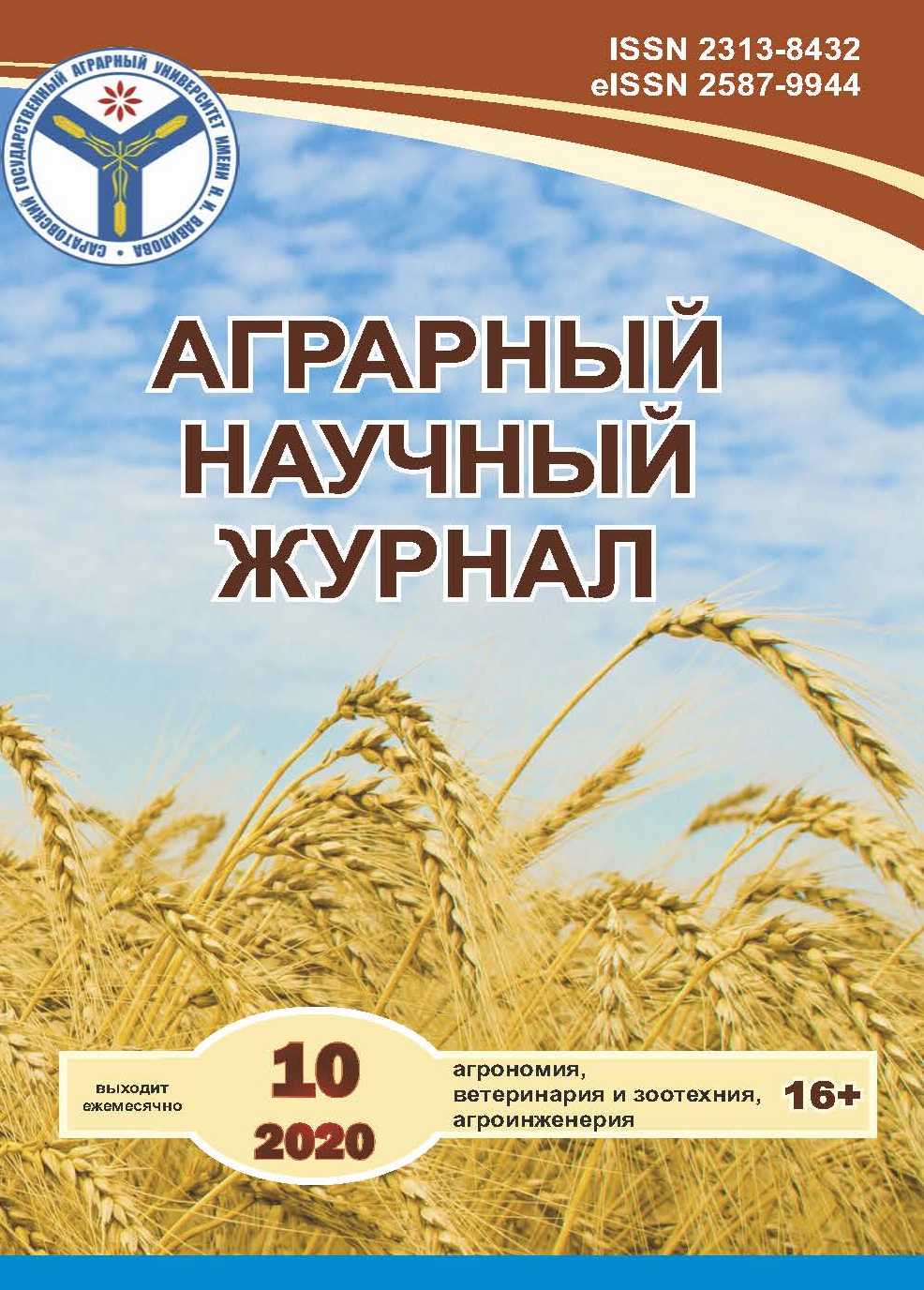Improvement of the cattle breeding industry based on the application of polymicrobiological feed addi-tives "Yarosil"
DOI:
https://doi.org/10.28983/asj.y2020i10pp94-99Keywords:
heifers, milk production, service period, insemination index, incidence, safety, feed, feed additive “Yarosil”Abstract
In the work carried out at Dzerzhinsky Plemzavod OJSC in the Yaroslavl region of the Yaroslavl region, the effect of the feed additive, Yarosil, fed to heifers during pregnancy, on young cows, was studied. It was established that the feed additive "Yarosil" had a prolonged positive effect on the body of first-calf heifers, which was expressed in improving the quality of household and normalizing physiological parameters. Feeding the feed additive “Yarosil” in the amount of 35 ml per animal per day increased the milk productivity of young cows for lactation by 562.5 kg - 12.10%, the average daily milk yield by 1.81 kg - 12.03%, while reducing feed costs by 1 kg of milk per 10.55% feed. units, reduced the service period by 21.2–16.77% of the day, the insemination index by 26.70%. The economic effect per heifer increased due to milk production by 3375.00 rubles. - 12.10%, sperm dose saving by 96.90 rubles - 26.70%. With an increase in the input rate by a factor of 2 (70 ml per animal per day), milk production per lactation increased by 1111.6 kg - 23.91%, average daily milk yield by 3.22 kg - 21.39%, while reducing feed costs by 1 kg of milk per 18.95%, feed. units, the service period decreased by 24,3–19,22% of the day, the insemination index by 27.74%. The economic effect per one heifer increased due to: milk production by 6669.60 - 23.91% rubles, saving sperm doses by 100.70 – 27.74% rubles. Regardless of the input rate, the feed additive “Yarosil” reduced the incidence by 16,67%, ensured 100% safety without the use of medical agents, increasing this indicator by 8.33%, and increased the economic effect due to the absence of the need for treatment costs by 7714, 00 rub., And safety for 28064.77 rub. The research results allowed to identify additional reserves for increasing the efficiency of the livestock industry with the rational use of feed, based on the use of feed additives "Yarosil" in the amount of 70 ml per animal per day.
Downloads
References
Алёхин Ю.Н. Эндогенные интоксикации животных. – Воронеж, 2000. – 12 с.
Григорьев Д.А. ЭМ-технология для решения проблем животноводства // ЭМ-технология сельскому хозяйству: материалы Междунар. науч.-практ. конф. – М., 2004. – С. 17–18.
Косяченко Н.М. Ярославская порода крупного рогатого скота – современное состояние и перспективы совершенствования // Многофункциональное адаптивное кормопроизводство. – М., 2018. – С. 55–61.
Крюков В., Попова С. Микотоксины угроза здоровью и продуктивности // Животноводство России. – 2012. – № 9. – С. 50–52.
Лукичёва Е.А. Инновации и ветбезопасность // Сельскохозяйственные вести. – 2017. – № 1. – С. 44–46.
Мымрин В.С., Гридина С.Л., Гридин В.Ф. Результаты голштинизации чёрно-пестрого скота в уральском регионе // Гентика и разведение животных. – СПб., Пушкин. –2014. – № 2. – С. 17–20.
Плохинский Н.А. Биометрия. – М.: Изд-во Моск. ун-та, 1970. – 367 с.
Пути повышения резистентности организма голштинизированного отечественного поголовья коров / А.Я. Батраков [и др.] // Ветеринария. – 2017. – № 12. – С. 11–14.
Попов С.И. Лечим без лекарств // Сельскохозяйственные вести. – 2016. – № 3.– С. 59–60.
Продуктивность крупного рогатого скота при обогащении рационов пробиотическим препаратом / Р.В. Некрасов [и др.] // Молочное и мясное скотоводство. – 2016. – № 7. – С. 19–22.
Селекция штаммов для изготовления пробиотиков ветеринарного назначения / А.Н. Панин [и др.] // Пробиотики, пребиотики и функциональные продукты питания. Современное состояние и перспективы: материалы Междунар. конф. – М.: Колос, 2005. – С. 8–9.
Сердюк Г.Н. Проблема продуктивного долголетия при голштинизации отечественных пород крупного рогатого скота и пути её решения // Молочное и мясное скотоводство. – 2015. – № 6. – С. 7–8.
Состояние обмена веществ у высокопродуктивных коров, его коррекция и профилактика /А.Я. Батраков [и др.] // Ветеринария. – 2017. – № 7. – С. 43–46.
Тимаков А.В., Тимакова Т.К., Шмаров А.Т. Анализ выбытия молочного скота импортной селекции в хозяйствах Ярославской области // Вестник АПК Верхневолжья. – 2018. – № 4. – С. 48–51.
Филиппова О.Б., Фролов А.И., Зазуля А.Н. Метаболический статус нетелей и первотёлок при кормлении концентратами с использованием БВМК // Ветеринария. – 2016. – № 11. – С. 49–53.
Шаблин П.А. Применение ЭМ-технологии в сельском хозяйстве // Практическая биотехнология в сельском хозяйстве, экологии, здравоохранении: сб. науч. тр. – М.: Агрорус, 2006. – С. 23–26..
Шабунин С.В., Алёхин Ю.Н., Нежданов А.Г. Перинатальная патология крупного рогатого скота – актуальная проблема ветеринарной медицины // Ветеринария. – 2015. – № 1. – С. 3–9.
ЭМ-препараты и обоснование апробации нового полимикробиологического кормового концентрата в животноводстве / Ю.Я. Кравайнис [и др.] // Вестник АПК Верхневолжья. – 2017. – № 3. – С. 48–53.
Downloads
Published
Issue
Section
License
Copyright (c) 2020 The Agrarian Scientific Journal

This work is licensed under a Creative Commons Attribution-NonCommercial 4.0 International License.








